Announcing the winners of NCCC 2016
The winners of this year’s competition were announced today! The teams received their trophies from Mr Teo Chee Hean, Deputy Prime Minister and Co-ordinating Minister for National Security, and Chairman of the Inter-Ministerial Committee on Climate Change, at a prize award ceremony this morning.
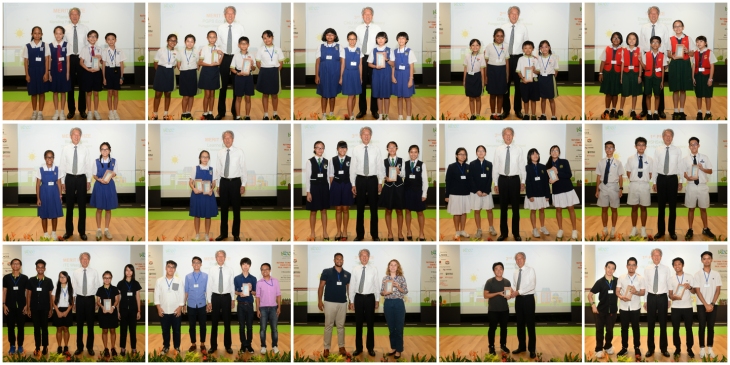
Receiving their prizes from DPM Teo at the NCCC 2016 Prize Award Ceremony are: Row 1 (left to right) Planet Saver; PGPS Eco Rangers; CHIJ (Katong) Primary; Gifts of Nature; Enviro-Champions, Row 2 Blue Fingers; Leanne Choo; Team Heatbusters; Noobcake; MSHSxMDMC, Row 3 ITE West DAVP; EcoFilms; Team YNC; Lenney Leong; AIIM
Here is the complete list of winners and the links to their videos:
PRIMARY SCHOOLS CATEGORY
|
1st Prize
|
Enviro-Champions, Juying Primary School
Video Title: Vision 2030 |
|
2nd Prize
|
Gifts of Nature, Punggol Green Primary School
Video Title: Climate-friendly 2030: It Begins from the Heart… |
|
3rd Prize
|
CHIJ (Katong) Primary, CHIJ (Katong) Primary
Video Title: Our Future, Our Singapore 2030 |
|
Merit Prize & Viewers’ Choice*
|
PGPS Eco Rangers, Punggol Green Primary School
Video Title: The Future is in Our Hands |
|
Merit Prize
|
Planet Saver, Marsiling Primary School
Video Title: Letter to Adik |
SECONDARY SCHOOLS & JUNIOR COLLEGES CATEGORY
| 1st Prize
|
MSHSxMDMC, Maris Stella High School (Secondary)
Video Title: A Gift from the Future to the Past |
| 2nd Prize
|
Noobcake, Nanyang Girls’ High School
Video Title: Singapore 2030: A climate-friendly City |
| 3rd Prize
|
Team Heatbusters, Raffles Girls’ School
Video Title: A Greener Singapore, A Happier Earth |
| Merit Prize &
Viewers’ Choice
|
Leanne Choo, CHIJ St. Nicholas Girls’ School
Video Title: Change for the Better |
| Merit Prize
|
Blue Fingers, CHIJ Katong Convent
Video Title: The Never Ending Never Ending Cycle |
INSTITUTES OF HIGHER LEARNING CATEGORY
| 1st Prize &
Viewers’ Choice
|
AIIM, ITE College East
Video Title: Singapore 2030: A Climate-friendly City |
| 2nd Prize
|
Lenney Leong, Temasek Polytechnic
Video Title: The Green Future |
| 3rd Prize
|
Team YNC, Yale-NUS College
Video Title: Jo Jo’s Dream |
| Merit Prize
|
EcoFilms, Nanyang Polytechnic
Video Title: The Glimpse |
| Merit Prize
|
ITE West DAVP, ITE College West
Video Title: My Future, My Home |
*A Viewers’ Choice contest was also conducted on Climate Change SG Facebook page in September 2016, where members of the public voted for their favourite NCCC 2016 videos.
Congratulations to all 15 teams! We would like to thank everyone, including our participants, teachers, parents, partners and voters, who supported and took part in NCCC 2016 in one way or another. We hope you were able to learn a thing or two about climate change from the competition and videos.
For more updates, do follow us on Climate Change SG and subscribe to our e-newsletter. Till next time!
The NCCC Viewers’ Choice Contest is back!
Vote for your favourite NCCC 2016 videos and stand a chance to win attractive prizes like a 2D1N staycation at an eco-friendly hotel.

The judges have made their choices, now it’s your turn! That’s right, the National Climate Change Competition (NCCC) 2016 Viewers’ Choice Contest is now open for voting!
Simply head to http://bit.ly/NCCC2016 and vote for your favourite videos on the Climate Change SG Facebook page.
Voters stand a chance to win prizes such as movie gift vouchers, a solar portable charger, a kick scooter and a 2D1N staycation at Siloso Beach Resort.
Each voter is allowed to cast one vote for each of the category per day. Voters earn one point for every vote they cast – so the more you vote, the more points you earn and the higher your chances of winning!
And here are our 15 shortlisted videos selected from over 200 entries received for NCCC 2016:
Primary Schools Category
PGPS Eco Rangers, Punggol Green Primary School
Video Title: The Future is in Our Hands
Watch this spoof on how Singapore residents are responding to weather changes due to climate change and how each of us can play a part for a better future.
Planet Saver, Marsiling Primary School
Video Title: Letter to Adik
Elder brother Abang writes a letter to his “unborn” brother on how he pictured Singapore to be in 2030.
Enviro Champions, Juying Primary School
Video Title: Vision 2030
A boy in the present gets transported to the sustainable future. He is brought around by his animal friends to see how Singaporeans can live in a climate-friendly city.
CHIJ (Katong), CHIJ (Katong) Primary School
Video Title: Our Future, Our Singapore 2030
Experience the imagination and creativity of the team in their interpretations of how a climate-friendly Singapore will be in 2030.
Gifts of Nature, Punggol Green Primary School
Video Title: Climate-friendly SG2030: It Begins from the Heart…
Little boy Febregas paves the way for a climate-friendly future with his favourite bag and weird inventions.
Secondary Schools & Junior Colleges Category
Noobcake, Nanyang Girls’ High School
Video Title: Singapore 2030: A Climate-Friendly City
Join the bat Ray who has been living on Saturn in a learning journey to the climate-friendly Singapore on Earth.
Leanne Choo, CHIJ St Nicholas Girls’ School
Video Title: Change for the Better
Learn the ways each of us can do to create a low carbon and resilient Singapore.
MSHSxMDMC, Maris Stella High School (Secondary)
Video Title: A Gift from the Future to the Past
A gift from the future How Min to his present self makes him change his ways to become more climate-friendly.
Bluefingers, CHIJ Katong Convent
Video Title: The Never Ending Never Ending Cycle
Follow Coraline as she has the same conversations with an altered parallel version of herself in 2030, only to have changed the conversation one day with a different question.
Heatbusters, Raffles Girls’ School
Video Title: A Greener Singapore, A Happier Earth
Mrs Earth has caught a serious case of global warming. The visiting doctor has an idea – a complete overhaul of how we live our lives in order to have a climate-friendly Singapore.
Institutes of Higher Learning Category
Team YNC, Yale-NUS College
Video Title: Jo Jo’s Dream
Little boy Jo Jo describes his dreams of a climate-friendly Singapore to Ama on the way to school.
ITE West DAVP, ITE College West
Video Title: My Future, My Home
What it takes to go to “heaven” or “hell”?
AIIM, ITE College East
Video Title: Singapore 2030: A Climate-Friendly City
Watch this explainer animation for the highlights on how a climate-friendly Singapore may look like in 2030.
Lenney Leong, Temasek Polytechnic
Video Title: The Green Future
A short documentary on how Singaporeans can act better to help reduce carbon emissions by taking more public transport and embracing less consumerism.
Eco-films, Nanyang Polytechnic
Video Title: The Glimpse
What if a glimpse of the future might not be what we expected?
Cast your votes for your favourites now, and spread the word on climate change by sharing them with your family and friends! Voting ends on 22 September.
The final results of the competition will be announced on 4 November 2016 at a prize award ceremony.
Keep calm and submit your video
A step-by-step guide for our NCCC 2016 participants on submitting your videos by 5 Aug 2016.
 The time has finally come for you to submit your masterpieces! Submission is now open until 5 Aug 2016, 5pm Singapore time. You can submit your video through the submission form on the NCCC 2016 website at www.nccc.gov.sg.
The time has finally come for you to submit your masterpieces! Submission is now open until 5 Aug 2016, 5pm Singapore time. You can submit your video through the submission form on the NCCC 2016 website at www.nccc.gov.sg.
Here is a step-by-step guide on how to submit your video:
Step 1: Upload your video on YouTube
Before submitting your video on the NCCC 2016 website, be sure to upload your video on YouTube.
These are the formats accepted by YouTube:
- .MOV
- .MPEG4
- MP4
- .AVI
- .WMV
- .MPEGPS
- .FLV
- 3GPP
- WebM
If you are having problems uploading your video on YouTube, you may wish to read up more on the supported YouTube file formats here.
You will need a Google account to upload your video on YouTube.
While waiting for your video to finish uploading, think of a catchy title and interesting description for your video! It is also important to set your video to ‘Public’; otherwise we would not be able to view it.
Once the video is uploaded, take note of the URL as you will need it for the submission form on the NCCC 2016 website.
Step 2: Log in to NCCC 2016 submission form
Before you begin with the submission, you are required to log in with the NRIC/passport number and email address of your teacher mentor or one of your team members. The NRIC/passport number must match the registration details provided during the registration phase.

After providing your NRIC/passport number and email, enter the captcha code. A one-time pin (OTP) will be sent to your registered mobile number.

Enter the OTP sent to your mobile phone. Please note that if you are using your team member’s information to log in, the OTP will be sent to that team member’s mobile phone.

If you do not receive the OTP within 10 minutes, click the ‘Resend OTP’ button to receive the OTP again.
Step 3: Submit you video and details
Upon log in, you should see the submission form.

Select the profile details you have registered under from the drop down list. You should be able to see the information of your individual or team entry on the next page.
Please check if the details listed are correct. You can edit the information and update the relevant fields. Teams who wish to add or remove a member, can select ‘No. of team members’ and update accordingly.
Now enter the YouTube URL of your video, your video title and video description into the form. The video description must not exceed 300 characters (not words).
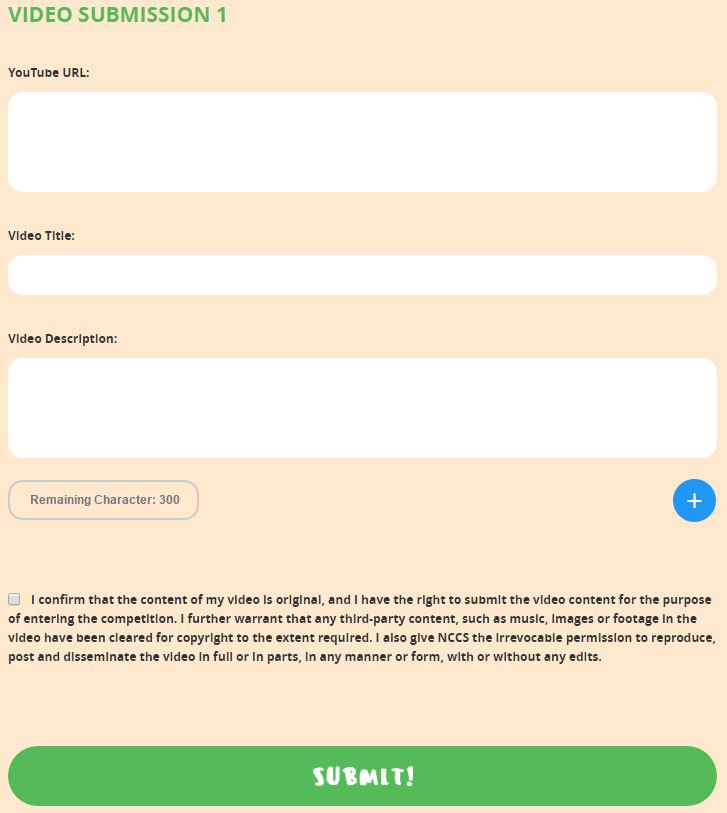
You should be able to see a confirmation message on screen that your video URL has been submitted successfully.

A confirmation message will also be sent to your registered email address.
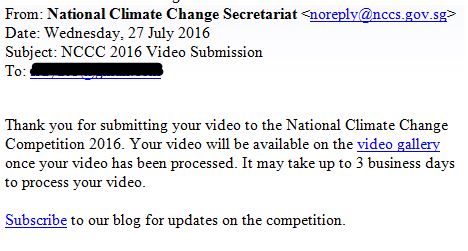
The video you have submitted will be featured on the NCCC 2016 video gallery once it has been approved by NCCS. This can take between three and five working days.
If you encounter any problems while trying to submit your video, do drop us an email at NCCS_Competition@nccs.gov.sg!
Let’s animate!
A recap of the animation seminar held on 4 June, exclusively for our NCCC 2016 participants.
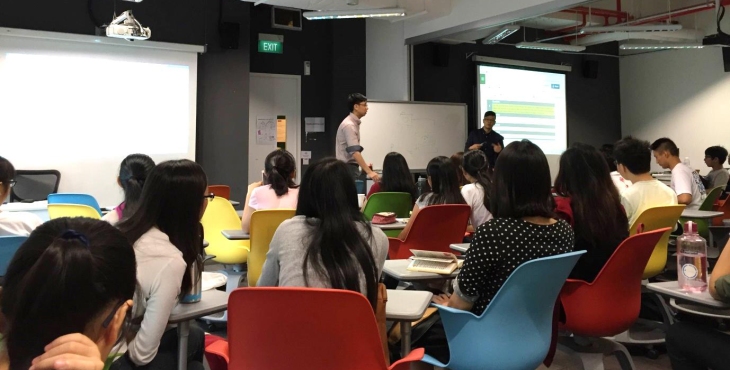
What is animation?
Mention the word ‘animation’, movies like Finding Nemo and Kungfu Panda come to mind. But what really is animation?
The “magic” of animation is to be able to give life to something, by capturing many static pictures and showing them in rapid succession, making the pictures appear to move. Pictures can be shown at various rates such as 24 pictures or frames per second. Technicality aside, it is a powerful communication tool that can reach out to a wide audience – from kids to adults.
Animation is often associated with cartoons, but that is not entirely true! Feature films, motion graphics and explainer videos are some of the modern uses of animation. It works well with any genre as long as the story concept is clear and good.
So how do you determine whether an animation or live action video works best for your story? As a guide, if your story can be expressed using live action, for example, if it is something you can shoot in real life, then animation may not be the best way to tell your story. Animation works best to show stories and ideas that are out of the world – basically the unimaginable!
What makes a good story?
While fancy animation skills are a plus point, a good storyline is most important! Remember, story is key and it should drive the visuals, not the other way around.
In our previous post, we covered what climate change is about and that should be a good start for you to develop your story and video. However, push yourself further and think of different ways to entertain and educate your audience, not just by stating facts and statistics.
Where do I begin?
In producing an animation, there are four stages of production.
Stage 1: Development
This is where you do your research for your storyline. These are several ways to start generating ideas to come up with a storyline: 1) in-depth research, 2) mind mapping, 3) develop a list of possible ideas, and 4) individual or group brainstorming. This is also when you should start writing the script, designing the characters and decide on the art directive – 2D/3D animation, stop motion animation or mixed animation.
Stage 2: Pre-production
You’re half way there! This is where all the planning takes place before the camera rolls. Start on your storyboard and layout. Storyboards can really smooth out the post-production process when it is time for editing. You should also start planning on the budget and timeline so you will not miss the deadline for video submission.
Stage 3: Production
This is when you will start working on your animation. During this stage, you will work out the lighting requirements, framing and composition, as well as to shoot and capture your frames.
Stage 4: Post-production
In the post-production stage, the animation is edited and polished. It is now ready for submission!
Bonus!
Some of you may be new to working on animation and unsure of the software to use. Don’t worry! We have picked out four software programmes that you can use to produce your animation:
We hope this gives you a better idea of what animation is, and whether it is a suitable medium for your story. Good luck!
Climate change 101
Learn about climate change, its impacts on Singapore and what Singapore is doing to address it. Plus, tips from us on what makes a winning video.
With only a month more to the submission period, we hope you have already started working on your videos by doing research on climate change, learning production and editing skills or attending our masterclasses.
To help you further, we have produced a short clip on climate change. We hope the information comes in handy when you’re developing your video.
What is climate change?
It refers to changes in weather over a long period of time. Climate change is already happening.
Did you know that 2015 was the warmest year since modern temperature record-keeping started in 1880? This was confirmed by NASA!
What causes climate change?
Scientists have discovered that human activities such as the burning of fossil fuels and deforestation release huge amounts of greenhouse gases into the atmosphere, causing the Earth to get warmer and hence climate change.
Impacts of climate change
Higher temperatures, extreme weather conditions like heavy rainfall and heat waves, and rising sea levels are some impacts of climate change.
What is Singapore doing?
Like other countries, Singapore may also experience the impacts of climate change.
We need to play our part – Singapore has pledged to reduce our emissions intensity (that is, emissions produced per GDP dollar) – by 36 per cent by 2030, and stabilise our emissions with the aim of peaking around 2030.
We have taken early measures to reduce our greenhouse gas emissions, such as making the switch from fuel oil to natural gas, the cleanest form of fossil fuel, to generate electricity and managing the growth of our vehicle population.
What’s next?
What will Singapore do next? How will a climate-friendly Singapore be like in 2030? Will our buildings be even more carbon-efficient? Will we have more places to deploy solar panels like façade of buildings or on roads? How will our transport options be like? Will technology and innovations help us? How will you and I play our part?
Misconceptions
Steer clear of inaccurate information. Littering, plastic or marine pollution and ozone depletion are not the reasons why climate change is happening; they damage our environment in different ways.
Tips from us!
Remember, your video should reflect your ideas on the theme Singapore 2030: A Climate-Friendly City. Information on climate change, e.g., its causes and impacts, must be explained accurately (if any).
Go through the judging criteria so you know how your video will be judged.
Apply what you have learnt at our masterclasses too – have a strong and unique storyline that reflects the theme! Entertaining and captivating videos will help your videos stand out from the rest.
Need more information? Take a look at the list of resources we have for you to get cracking on ideas for your video.
Keep calm and good luck!
Learn how to produce videos like a pro!
Sign up for our video making masterclasses and learn how to produce videos like a pro.

Registration for the National Climate Change Competition (NCCC) 2016 has closed. Are you excited to start working on your videos?
We have scheduled a series of video making masterclasses in the form of workshops, seminars and story clinics in May and June just for YOU!
If you’re keen to learn how to create a good story and the skills needed to produce good animation or live action clips, you should sign up for these classes.
The classes are free of charge for all registered NCCC 2016 participants. Participation is optional and the seats are available on a first-come-first-served basis, so do sign up early!
Here’s a summary on what you can expect in the classes:
Story clinics
Open to all participants
Animation story clinic: 20 May 2016, 2pm to 6pm
Film Production story clinic: 6 June 2016, 2pm to 6pm
In both sessions, you will learn methods and tips for creating a good story for your videos. You will also be guided by instructors on creating stories that are relevant to the competition theme. At the end of the clinic, you will bring back a story idea that you can work on for the competition.
Seminars
Animation creation seminar
Open to participants in the secondary school & JC, and IHL category
4 June 2016, 9.30am to 12.30pm
Conducted by Xavier Lai
Experienced animator and chief instructor of Animagine, Xavier Lai, will share his knowledge on creating a good animation and provide tips on how to develop a good storyline and video.
Film production seminar
Open to participants in the secondary school & JC, and IHL category
11 June 2016, 9.30am to 12.30pm
Conducted by Kelvin Sng
Kelvin Sng, the director of local feature film “Taxi! Taxi!” which starred top local comedians Mark Lee and Gurmit Singh, will share his knowledge on creating a good short film and provide tips on how to develop a good storyline and video.
Workshops
Animation workshop
Open to participants in the primary school category
Basic animation workshop: 24 May 2016, 2pm to 6pm
Open to participants in the other categories
Full-day animation workshop: 31 May 2016, 9am to 6pm and 2 June 2016, 9am to 6pm
You will be introduced to different forms of animation. You will also learn basic stop-motion animation techniques and be able to create a simple animation by the end of the workshop.
Live action workshop
Open to participants in the primary school category
Basic live action workshop: 27 May 2016, 2pm to 6pm
Open to participants in the other categories
Full-day live action workshop: 1 June 2016, 9am to 6pm and 3 June 2016, 9am to 6pm
You will be given an overview to film-making. You will also learn filming postures and angles, as well as basic techniques of video-editing. The full day workshop for older students will cover the entire production process from idea creation, basic scripting, filming to editing.
And… For the first time in NCCC history, we will be bringing these workshops to your schools. Isn’t that great and so convenient! You will have to commit to at least 20 student participants for these specially-arranged workshops. Contact us to schedule a date and time.
All registered participants would have already received the details on how to sign up for these classes through your emails. Contact us at NCCS_Competition@nccs.gov.sg if you have any queries.
Singapore 2030: A Climate-Friendly City
How will a climate-friendly Singapore look like in 2030? Share with us your vision and aspirations by participating in the NCCC 2016!
Will it be one where…
People cycle or walk on pavements made of solar panels?
People conscientiously reduce their carbon footprint by saving energy and reducing waste?
Our city is well-prepared for extreme weather events like heavy storms and heatwaves?
How can individuals like you and I play our part in making Singapore climate-friendly?
Tell us your ideas for a climate-friendly Singapore in 2030 through your video! There is no restriction to the presentation style or genre—it can be an animation or live action short film.
Winning videos from each category will stand to win attractive cash prizes and a chance for their videos to be showcased.
Registration’s closing in 2 weeks’ time. Hurry and register at www.nccc.gov.sg by 9 May!
Registered participants also get to attend exclusive masterclasses on video making and storytelling in May and June. More on this in our next blog post!
Lights, camera, climate action!
[This article was first published on NCCS website.]
Climate change is becoming an increasingly prevalent theme in books, films, and even music worldwide. Can reel life play a role in encouraging real world environmental awareness and action?
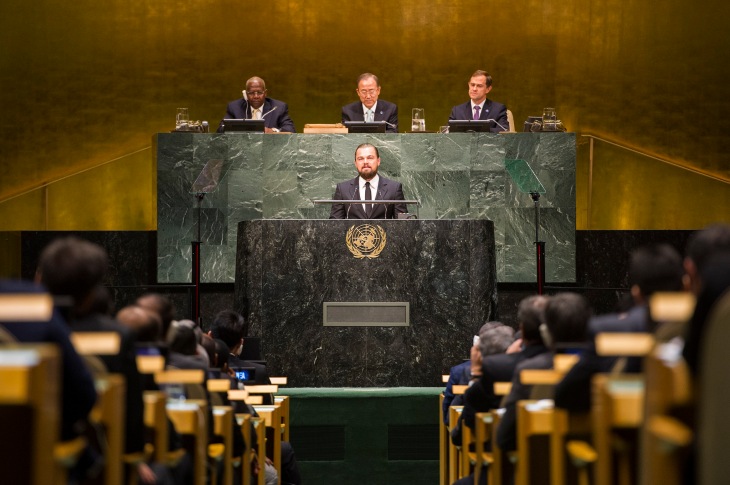
Hollywood actor Leonardo DiCaprio speaking at the United Nations Climate Summit in September 2014. The actor is a long-time environmental advocate and the UN Messenger of Peace with a special focus on climate change. Image: UN Photo/Mark Garten, CC BY-NC-ND 2.0
By Vaidehi Shah
Hollywood actor Leonardo DiCaprio grabbed headlines in February when he clinched his first Academy Award after many years in the industry and several unsuccessful nominations.
Taking the opportunity on the global stage during his acceptance speech, DiCaprio declared: “Climate change is the most urgent threat facing our entire species, and we need to work collectively together and stop procrastinating. We need to support leaders… who do not speak for the big polluters, but for (all of humanity, indigenous people, and underprivileged people)”.
DiCaprio’s speech was widely reported and went viral on social media. His strong message was unusual for the glitzy award ceremony, but environmental issues such as climate change and pollution are becoming an increasingly common theme in films, books, and even music around the world.
Famous examples range from Hollywood hit movie The Day After Tomorrow, which portrays extreme weather events that usher in global cooling and a new ice age, to Earth Song, a 1995 piece by American musician Michael Jackson, which discusses environmental and animal welfare themes.
Whether it is fictional novels and movies or factual documentaries and books or songs, the media is an effective way to raise awareness about global issues like climate change and drive behavioural change, say experts.
Michael Broadhead, a Canadian teacher in Singapore and organiser of the first crowd-supported environmental film festival here, tells Climate Challenge that “when films, novels, and music start to incorporate themes like climate change, it helps to permeate the message through society”.
“That repetition is key to building support for change, says Broadhead, whose brainchild, the Earth Film Festival, will be held in April. As part of the initiative, members of the public can screen one of six environmental documentaries for friends at home.
Available titles include Heart of the Haze, a documentary about forest fires in Indonesia which produce greenhouse gas emissions and cause haze pollution throughout the region every year; and Cowspiracy, which explains why meat is the worst culprit of global warming.
The power of film
“Effective documentaries are incredibly refined ways to communicate a complex message and visualise global problems which we cannot see in our daily lives” says Broadhead, who works at the Canadian International School in Singapore.
In 2014, for example, some of Hollywood’s biggest stars including director James Cameron, actor and former California governor Arnold Schwarzenegger banded together to produce Years of Living Dangerously, a television documentary series focused on climate change.
With stars Ian Somerhalder, Don Cheadle, Matt Damon and Jessica Alba narrating segments, the series received positive reviews and was hailed by The Guardian as “perhaps the most important climate change multimedia communication endeavour in history”.
In addition to documentaries, books and literature can also expose unseen environmental issues to the public.
One such book which explores the environmental and social impacts of the fast fashion industry is Overdressed: The Shockingly High Cost of Cheap Fashion by American writer Elizabeth Cline.
Fast fashion refers to low-price clothes of an inferior quality from high street brands, which are mass produced and easily available.
The book highlights how beneath the glossy exterior of trendy clothes, the industry is rife with labour exploitation and environmentally unfriendly practices in factories in emerging countries such as Bangladesh and Vietnam, where regulations are not as tight.
Cline also narrates how visiting a Salvation Army clothes distribution centre in New York showed that while the centre processes five tonnes of clothes a day, only a small proportion of clothes are resold in the charity’s thrift stores. The rest is landfilled or recycled.
In addition to the stress this places on landfills, the culture of throwing out clothes soon after buying them also wastes the resources used to make and ship the clothes in the first place.
One cotton shirt, for example, can require up to 2,700 litres to make; according to a 2014 report in The Guardian, while powering factories as they churn garments round the clock and shipping them across the world also uses energy and increases the garments’ carbon footprint.
Producing nylon and polyester—which have become the dominant fabrics in the fast fashion industry—also damages the environment, research shows. For example, a 2015 article by news site Alternet reveals that manufacturing nylon emits a large amount of nitrous oxide—a greenhouse gas 300 times more potent than carbon dioxide.
It also takes about 70 million barrels of oil to produce the virgin polyester used in fabrics each year.
Despite this, Cline notes that brands such as Sweden’s H&M and Zara roll out new designs and urge consumers to keep up with the latest trends on a weekly, if not daily, basis.
For Singaporean web designer Low Hui Wei, 30, reading Overdressed sparked a major change in her approach to choosing and buying clothes.
“I was ashamed of being so consumerist and having so much of my money go to unsustainable clothing chains,” says Low, who read the book in mid-2013. “I shop far less frequently now and try to save up for higher priced items that I love, instead of impulse buying cheap fashion”.
Beyond facts
But it’s not just hard-hitting books and documentaries that can raise awareness about pressing global issues, says Broadhead, who refers to the incorporation of environmental messages into films, music, and novels as “artivism”.
Genres such as science fiction or dystopian stories can also show people the potential consequences of inaction or alternately, a path to positive change. Looking to the future is something humans are ill-equipped to do otherwise, and fiction can help, says Broadhead.
Recent examples of this include the 2014 Christopher Nolan film Interstellar, which depicts a future where the planet is ravaged by climate change; and science fiction classic Star Trek, which Broadhead says “shows humanity evolving past competition, materialism, capitalism and greed”.
Beyond the silver screen, books and music are also gaining ground as popular platforms to discuss climate issues. “Cli-fi”, or climate fiction, is now officially recognised as a literary genre, with famous authors such as Canadian writer Margaret Atwood and English novelist Ian McEwan exploring environmental themes in their recent books, MaddAddam and Solar respectively.
Music, according to industry professionals, may be an even more effective medium than film or fiction to communicate environmental messages.
For Singaporean musician Jack Ho, a well-written song can get the point across to the public better than traditional awareness campaigns because it appears “more heartfelt and less preachy”.
An example is an annual song-writing competition about environmental issues organised by the National Environment Agency since 2010. The Eco-Music Challenge is a platform for aspiring musicians to pen songs about sustainability.
Ho, who is a mentor for the Eco-Music Challenge, cites Saltwater by British musician Julian Lennon as a song with an important environmental message. With lyrics like “But when I hear of how / The forests have died / Saltwater wells in my eyes”, the 1991 song is an emotional portrayal of environmental degradation and poverty, says Ho.
No silver bullet
Broadhead notes that apart from the medium itself, celebrities behind these creations can also use their influence to raise awareness. “The message will receive more consideration from their fans”, he says.
However, “there is no silver bullet to raising awareness and inspiring change,” he acknowledges. “What inspires one person does nothing for the next”.
National University of Singapore sociology professor Chua Beng Huat, agrees, noting that popular culture is not as effective a vehicle of awareness and behaviour change as peer influence, and that there is no strong evidence that it directly affects behavioural change.
“An audience won’t watch a television show or read a book if they cannot identify with what is going on,” he says.
He also points to the short-lived impact of high-profile celebrity-fronted environmental initiatives such as the Live Earth concert in 2007—a global mega-event where musicians performed in cities across the world to raise awareness about climate change—to suggest that celebrities have a limited effect on driving behavioural change.
“Consumers are more likely to be influenced by other people’s behaviour than by big stars telling them what to do,” says Chua.
The upcoming Earth Film Festival agrees and will integrate a community element into the film screenings. Getting individuals to host viewings for friends can help create a shared experience that inspires people to discuss sustainability with one another, says Broadhead.
Inspiring action through video-making
Convincing people that their actions matter is also the motivation behind a video competition launched by the National Climate Change Secretariat (NCCS).
NCCS’s annual National Climate Change Competition, first launched in 2011, is a platform for students as well as young animators and film-makers to submit short films about climate change.
Yuen Sai Kuan, Director of Corporate Affairs Division, NCCS, notes that “many people feel that there is little which they can do to address climate change”, but this is a misconception as individual actions like using less electricity and recycling can make a difference.
“Films and videos can help to raise awareness and inspire action in a visually-powerful and enjoyable way,” he adds. “The NCCS video competition provides a creative avenue for students to express their thoughts and ideas on climate change by creating their own short clips. We hope that through the competition, students learn more about the topic and are inspired to make a change.”
The 2016 National Climate Change Competition is now open for registration: www.nccc.gov.sg.
NCCC 2016 is back!
Register by 9 May to participate in NCCC 2016 and stand a chance to win attractive cash prizes.
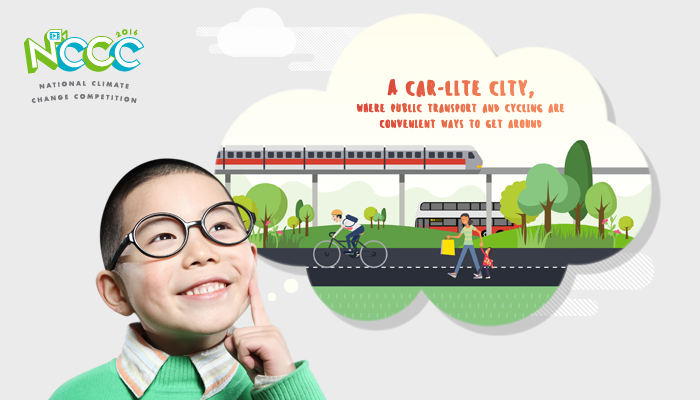
Our annual short video competition – the National Climate Change Competition (NCCC) – is back!
Open to all students, this year’s NCCC invites you to share with us your vision of how a climate-friendly Singapore will look like in 2030.
Will our roads be free of cars as people take public transport often? Will our city be powered by 100% renewable energy? Will we be prepared for extreme weather events like heavy storms?
Translate your vision into a creative and compelling short video (3 minutes or less) on the theme Singapore 2030: A Climate-Friendly City. You can choose whichever presentation style (e.g., live action, animation) you are most comfortable with.
To take part, register with us before 9 May 2016! The top five videos will stand to win attractive cash prizes!
You are also eligible to join a series of masterclasses in video-making from May to June 2016. The classes will only be opened to registered participants, so do register for NCCC early! Details on how to sign up for the classes will be sent to you in May. So do look out for it!
Also, make sure you read through the competition theme, rules and judging criteria to get a good start. Come register for NCCC 2016 and show us what you’ve got!
The people behind the winning videos
The winners of the National Climate Change Competition (NCCC) 2015 were unveiled in our previous post. But who are the people behind those winning videos?
Watch their videos to learn how their videos stood out from more than 170 entries submitted. The NCCC 2016 will return in March next year, so watch this space!
EnviroQuest Champions from Juying Primary School
First prize winner, Primary Schools Category
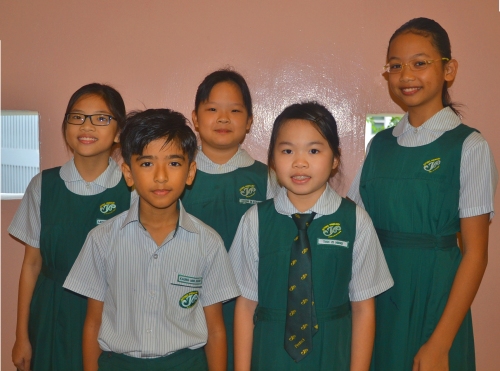
Inspired by animation movie The Bee, the team from Juying Primary wanted to show how climate change impacts human beings, as well as the flora and fauna. Even though the team’s members came from the school’s Infocomm Club and Environmental Club, they shared the common passion of wanting to champion green efforts, and to inspire others to make the right choices for the future. We Can BEE the Change, as we know it, is the culmination of this passion, coupled with good clay animation skills.
Climate Guardians from Rulang Primary School
Second prize winner, Primary Schools Category
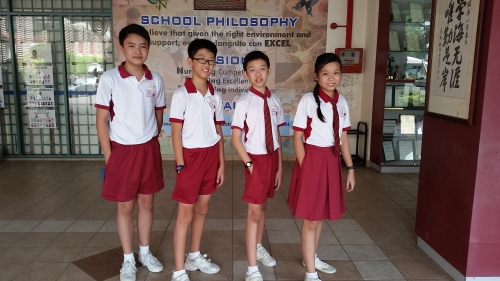
This video recorded in a single take by the Climate Guardians from Rulang Primary represents the only one chance we have to save our environment from the dire consequences of climate change. The video includes a catchy ditty to remind everyone to do their part for the climate, and make a choice to make a difference.
Team G.A.I.A GEN from Anderson Primary School
Third prize winner, Primary Schools Category
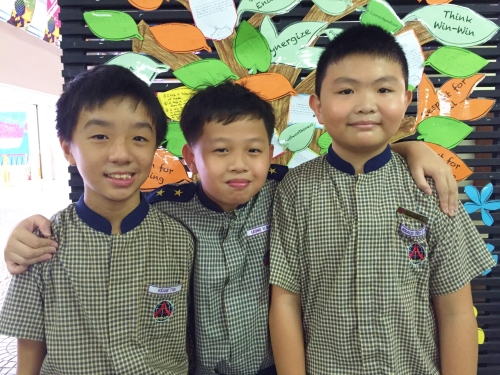
Titled Our World, Our Climate, Our Choice, the team from Anderson Primary School wanted to spread the message about how climate change affects human beings and the environment. The video also features some ways in which we can address climate change. Ultimately, it is up to us to make the right choices for a better world and climate.
HGS InfoComm D3T2, Haig Girls’ School
Merit prize winner, Primary Schools Category
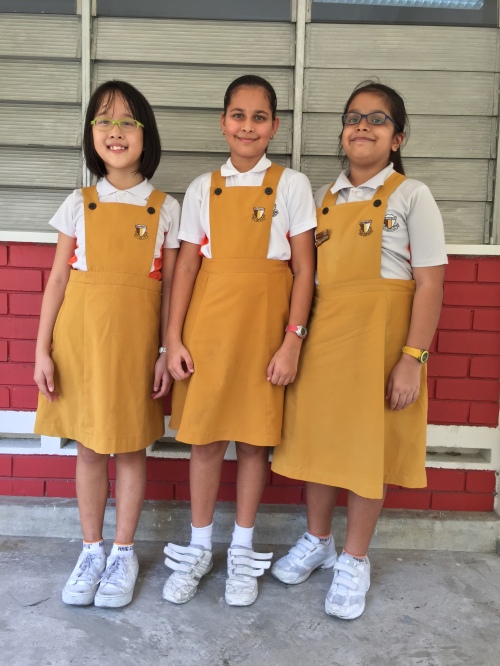
Using just a whiteboard and coloured markers, the team from Haig Girls’ presented the causes of climate change through a time-lapse animation, and provided helpful tips on how we can slow climate change.
Team 2 from Pei Hwa Presbyterian Primary School
Merit prize winner, Primary Schools Category
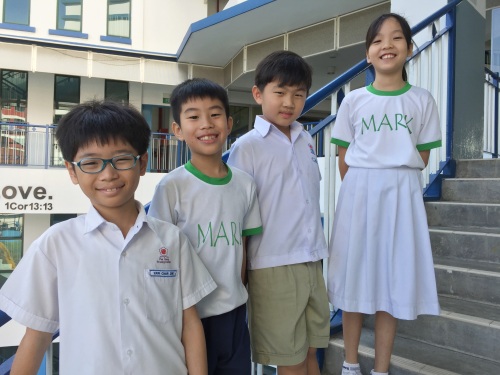
The four-member team from Pei Hwa Presbyterian Primary used everyday household items to illustrate the impact of human activities on climate change.
MITS Three from Maris Stella High School
First prize winner, Secondary Schools and Junior Colleges Category
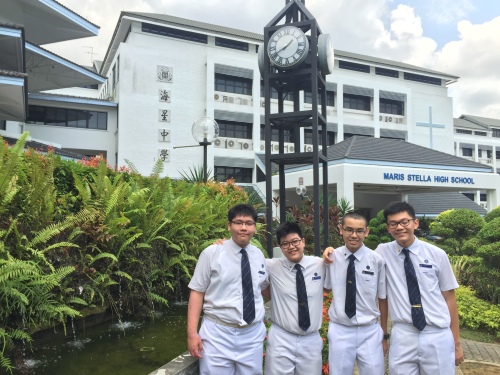
MITS Three’s play on the concept of time came about from the team’s whimsical idea of getting the video’s protagonist from the future to convince his present self to change his wasteful habits before things get out of hand. The team hoped their video would allow viewers to get a glimpse of the future, reflect on the past and make a change for the better of our climate in the present day.
CVSS from Compassvale Secondary School
Second prize winner, Secondary Schools and Junior Colleges Category
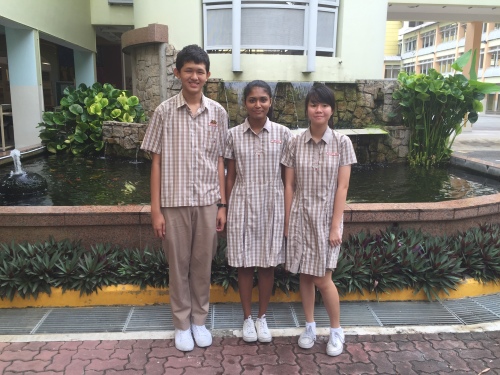
Filmed from a student’s perspective, the team from Compassvale Secondary wanted viewers to consider the cost of climate change through everyday choices that we make. The team hoped viewers will be encouraged to make changes to their daily choices and habits after watching their video.
Cli-mates from National Junior College
Third prize winner, Secondary Schools and Junior Colleges Category
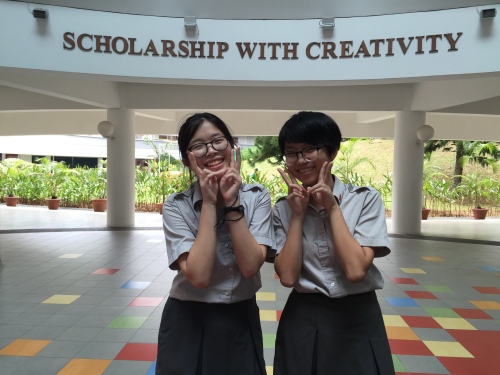
The duo from National Junior College wanted to bring across the fact that slowing down the rate of climate change will take a long time, and it requires the hard work of not just one generation. They therefore articulated the importance of educating the next generation to continue the work of the previous generation to address climate change.
Team Octopus from Edgefield Secondary School
Merit prize winner, Secondary Schools and Junior Colleges Category
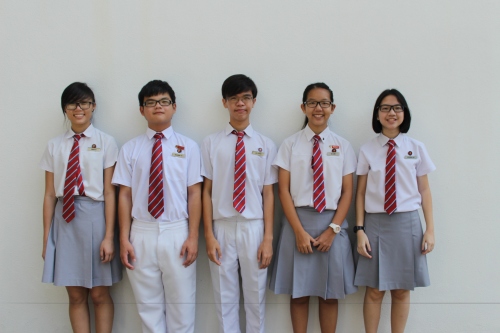
Team Octopus from Edgefield Secondary focused on food shortage, a consequence brought about by dry spells exacerbated by climate change. Through this video, the team hoped to spread awareness on this issue and urged the viewers to start taking action immediately.
Lightning Alert from National Junior College
Merit prize winner, Secondary Schools and Junior Colleges Category
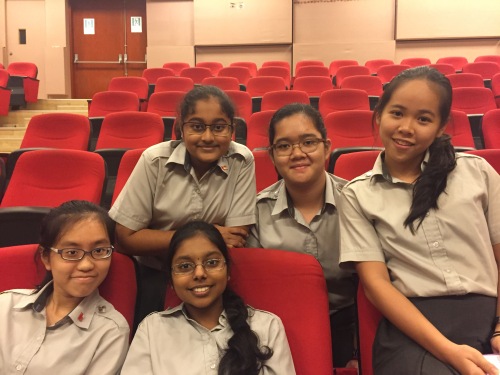
Small and seemingly inconsequential daily actions release Earth-warming greenhouse gases into our atmosphere. Lightning Alert’s video reminds us of this, and urges all of us to make a difference through our daily choices to protect our climate.
Luminocity from Nanyang Polytechnic
First prize winner, Institutes of Higher Learning Category

A Boy from the Future, as the video’s name suggests, involves the element of time travel. The team hoped their video would bring a greater awareness to viewers that human beings are actually the ones causing climate change, and that everyone should pitch in to take action for the climate, instead of lamenting that nothing can be done. As to what attracted the team to the competition, the team thought the NCCC 2015 was a good platform for them to apply video editing and cinematography techniques learnt in class.
P.A.L.S from Republic Polytechnic
Second prize winner, Institutes of Higher Learning Category
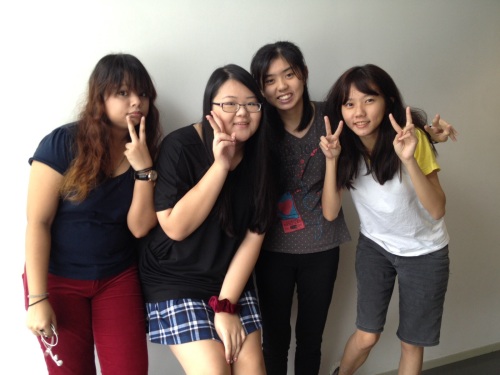
The team was unfamiliar with the term climate change when they started working on their short film, Saving Her. That did not stop them from doing thorough research to fully understand the topic and apply their point of view through their video.
Miracles in April from Singapore Polytechnic
Third prize winner, Institutes of Higher Learning Category
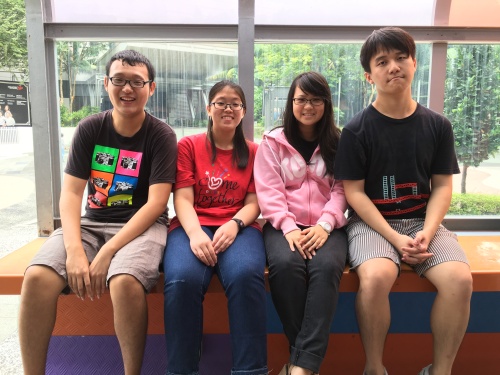
Team Miracles in April wanted to spread the word on climate change as it is a serious issue that people often do not pay attention to. Their video, Right Now, It’s Our Climate, It’s Our Choice, expressed their belief that the correct actions, no matter how small, can help make a difference in the long run.
Duodynamic from ITE College East
Merit prize winner, Institutes of Higher Learning Category
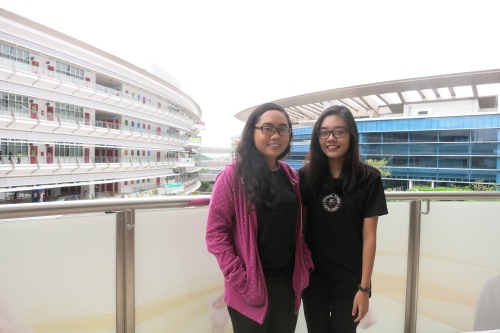
These girls teamed up to create a video in the hope of raising climate change awareness. Their video, Our Climate Our Change, articulated their desire to see a world where everyone lives sustainably to create a liveable climate.
LCUBE from Singapore Polytechnic
Merit prize winner, Institutes of Higher Learning Category
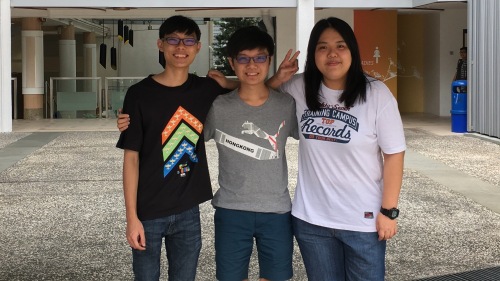
To help more people understand what climate change is all about, the team from Singapore Polytechnic created a video, Our Climate, Our Choice, to explain how human actions are affecting the climate. They hoped that more people can quit their energy wasting habits to save our one and only planet Earth.
Yegg
First prize winner, Open Category
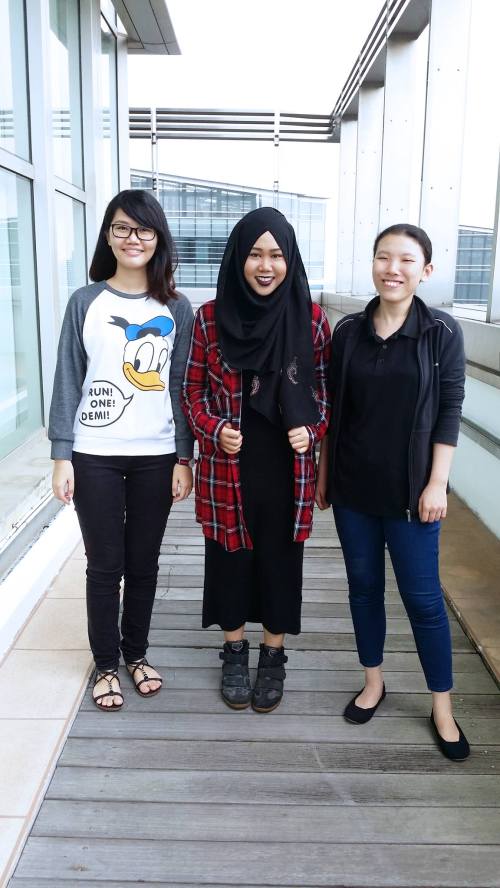
Yegg’s Earth Story is light-hearted and fun. The team wanted to create a video that both children and adults could enjoy, using a simple story on how human actions can affect the climate without the use of dialogue or lengthy explanations. The team hoped viewers would relate to their video, and learn to value and not waste the finite resources we now enjoy on Earth.
The Green Cicak
Second prize winner, Open Category

The mother-daughter duo developed a passion for environmental issues after experiencing resource scarcity while living overseas. Little Actions, Big Picture reminds the viewers that climate change is real and it is already happening. The short video also encourages viewers to make a conscious effort to take small actions to make a big difference to our climate.
Emeralds
Third prize winner, Open Category
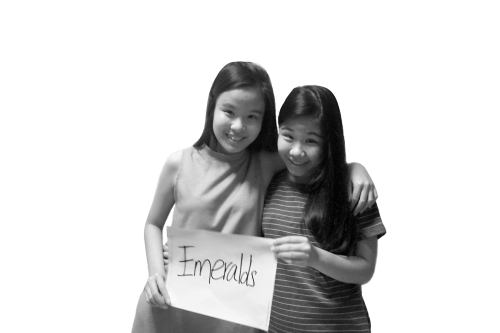
Team Emeralds hoped that after watching their video The Plastic Woes, viewers will opt for greener alternatives and reduce the unnecessary usage of plastics. The team felt that many are unaware that they can help address climate change by reducing the use of plastics to reduce their carbon footprint.
CooLads Collab
Merit prize winner, Open Category
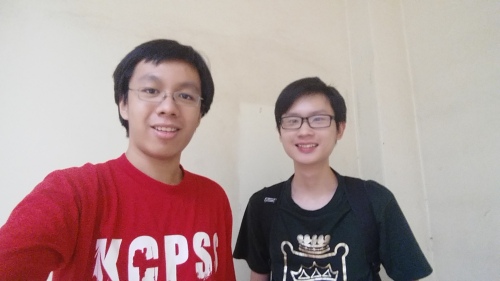
CooLads Collab’s Excessive is a good reminder how daily actions like switching on the light in the day or switching on the fan when the air-conditioner is already in use not only waste energy, but contribute to the problem of climate change. They hoped that the viewers will be more responsible towards our climate.
Mimosa
Merit prize winner, Open Category

Team Mimosa was inspired to create their video, Climate Change, after watching a series of documentaries. Their video , featured interviews with members of the public concerned about climate change. The team hopes their video will inspire more to do more to tackle man-made climate change.
